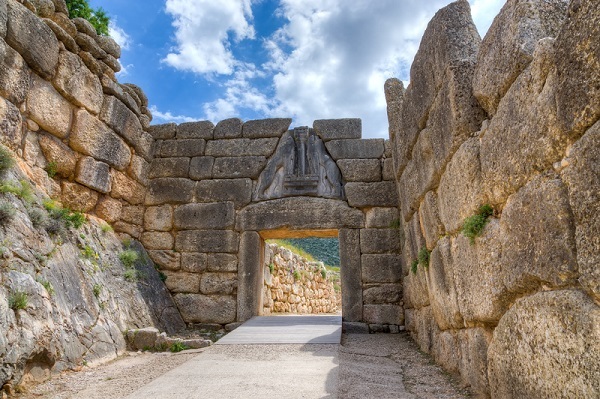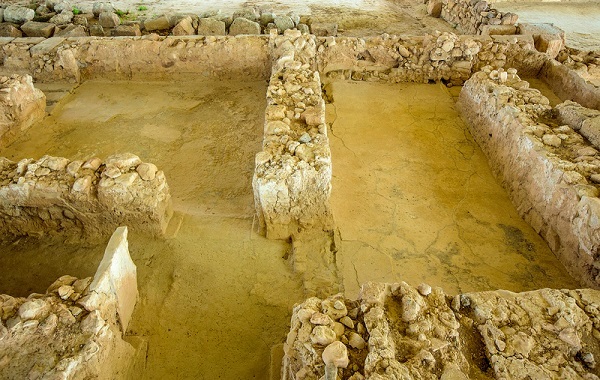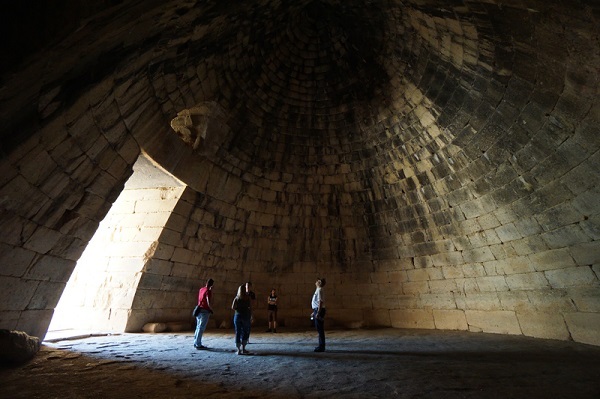

The Mycenaean civilization was an ancient Greek culture that existed between 1600 and 1100 BCE. They were named after the city of Mycenae, which was a major center of their culture. They were skilled warriors and traders, and their society was heavily influenced by their military prowess. They developed a form of writing known as Linear B, which was used to record their administrative and economic activities. They were known for their impressive fortifications, such as the Lion Gate at Mycenae, and their metalworking skills. They were conquered by the Dorians in the 12th century BCE, which brought an end to their civilization.

Mycenaean Lion Gate
The Mycenaeans were an ancient Greek civilization that existed between 1600 and 1100 BCE.
They were named after the city of Mycenae, which was a major center of their culture.
The Mycenaeans were skilled warriors and traders, and their society was heavily influenced by their military prowess.
They developed a form of writing known as Linear B, which was used to record their administrative and economic activities.
The Mycenaeans were known for their impressive fortifications, such as the Lion Gate at Mycenae, which was built in the 13th century BCE.
They were also skilled metalworkers, and they produced a wide variety of weapons and armor, including swords, spears, and helmets.
The Mycenaeans established a number of powerful city-states, including Mycenae, Tiryns, and Pylos, which became the centers of their culture and power.
These city-states controlled much of mainland Greece, as well as parts of the Aegean and Ionian seas, allowing them to maintain a powerful navy.
They traded extensively with other cultures, including the Minoans on Crete, the Egyptians, and the Hittites in Anatolia, which greatly contributed to their wealth and power.
They were also known for their impressive fortifications, such as the Lion Gate at Mycenae and the Palace of Nestor at Pylos, which were built to protect the city-states from invasion.
They were conquered by the Dorians in the 12th century BCE, which brought an end to their civilization and ushered in a new era in ancient Greek history.
The Mycenaeans were organized into a hierarchical society, with a powerful ruling class at the top.
They had a complex system of government, with kings and officials administering the various city-states.
They were skilled farmers and herders, and they produced a wide variety of crops and livestock.
They also had a developed system of writing, known as Linear B, which was used to record their administrative and economic activities.
They were skilled metalworkers, and they produced a wide variety of weapons and armor, including swords, spears, and helmets.
The Mycenaeans were skilled artists and architects, and they developed a unique style of art and architecture that is still admired today.

Mycenaean Palace of Nestor
The Mycenaeans were skilled painters, and they produced a wide variety of frescoes, which were used to decorate the walls of their palaces and tombs.
These frescoes depict a wide variety of scenes, including battles, hunting, and religious rituals.
They are known for their vibrant colors and lifelike depictions of people and animals.
The frescoes of the Mycenaeans are considered to be some of the finest examples of ancient Greek art.
Some of the most famous examples of Mycenaean frescoes are found in the Palace of Nestor at Pylos and the Treasury of Atreus at Mycenae.
The frescoes provide valuable insight into the daily life and culture of the Mycenaeans.
The Mycenaeans were skilled metalworkers, and they produced a wide variety of weapons and armor.
They are known for their distinctive bronze helmets, which were often decorated with images of lions and other animals. These helmets were made out of a single sheet of bronze and were designed to protect the head and face of the warrior.
They also produced a wide variety of body armor, including cuirasses, greaves, and shields. Cuirasses were made of bronze or linen and were designed to protect the chest and back of the warrior, while greaves protected the legs.
The Mycenaeans also produced a variety of weapons such as swords, spears, and daggers, which were all made of bronze.
The Mycenaeans' armor and weapons not only served a practical purpose but also had a ceremonial purpose, demonstrating the power and wealth of the ruling class.
In conclusion, the Mycenaean civilization was an important chapter in the history of ancient Greece. They were known for their impressive fortifications, skilled metalworking, and a developed writing system. Their culture was heavily influenced by their military prowess, and their society was organized into a hierarchical structure. They left behind an array of artifacts such as frescoes, weapons, and armor that provide valuable insights into their daily lives and cultures. Though their civilization was conquered by the Dorians, their legacy lives on in the form of their impressive architectural and artistic achievements, which continue to fascinate scholars and enthusiasts of ancient history.

Mycenae Tomb of Atreus
Q1. What was the primary source of income for the Mycenaeans?
Ans. The Mycenaeans were primarily agrarian society, with farming and herding being the main source of income. They also engaged in trade, both domestically and with other cultures, which would have been another significant source of income. They also had a complex system of government and a powerful ruling class that controlled the wealth of society.
Q2. What kind of writing system did the Mycenaeans use?
Ans. The Mycenaeans used a form of writing known as Linear B. It was a syllabic script that was used to record their administrative and economic activities. It was deciphered in the 1950s by Michael Ventris, and it revealed a great deal of information about the Mycenaean society, including their language, which is believed to be an early form of Greek.
Q3. What was the significance of Mycenaean Armor?
Ans. Mycenaean armor was designed to provide maximum protection while still allowing the wearer to move freely. They were skilled metalworkers and produced a wide variety of weapons and armor, including swords, spears, and helmets. Their distinctive bronze helmets were often decorated with images of lions and other animals.